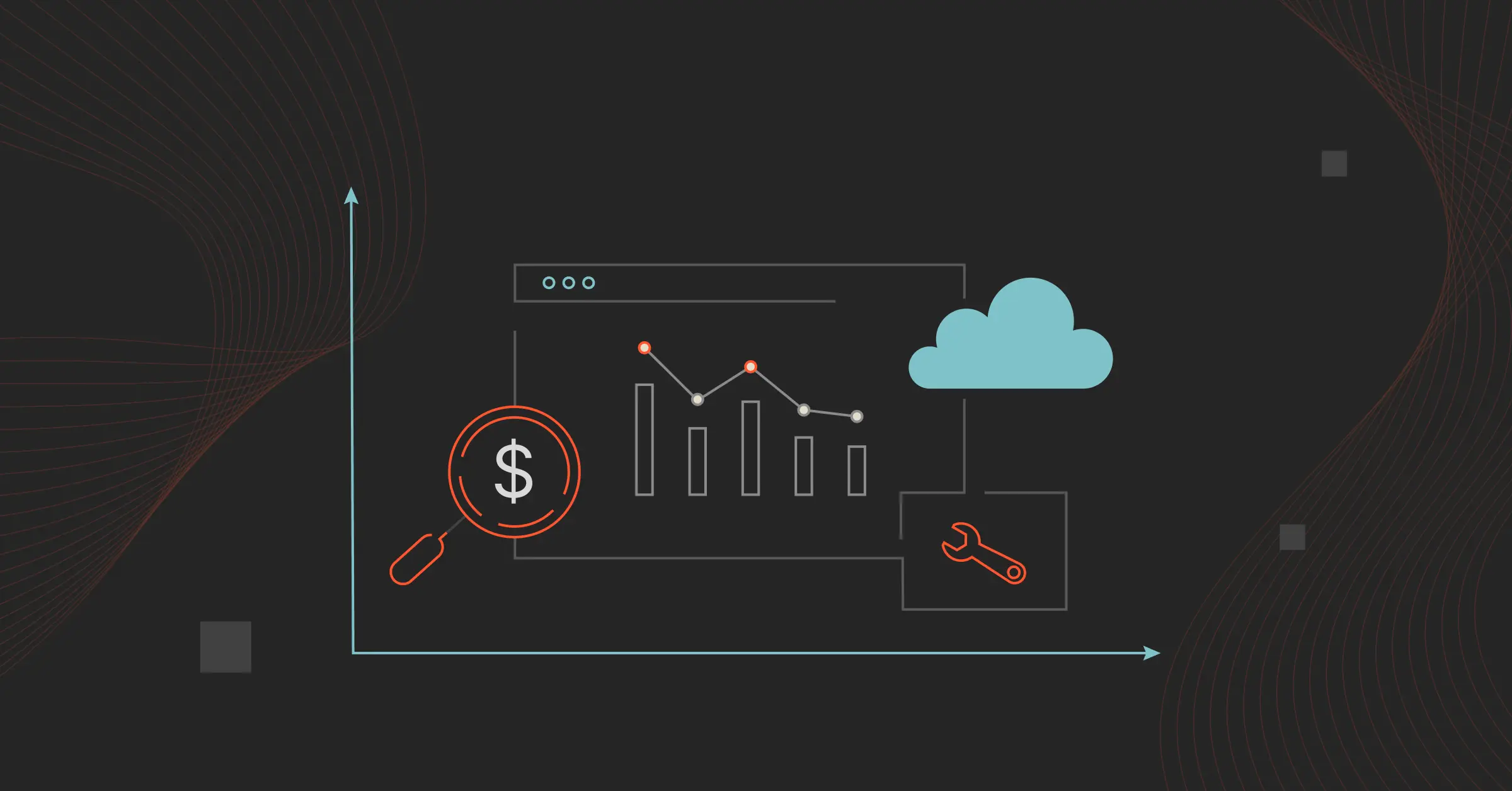Cloud computing empowers organizations to access IT resources on-demand, over the internet, and on a pay-per-use basis. Thus, your company does not need to purchase, install, operate, and upgrade hardware for physical data centers.
Instead, you can rent resources as needed from cloud service providers such as Amazon Web Services (AWS). For instance, AWS provides compute, storage, database, networking, machine learning, data lake and analytics, security, and IoT resources/services.
This means you can get to market faster, spend less money on owning computing hardware, and only pay for what you use, once you use it.
What Are The Types Of Cloud Computing Tools Available?
Depending on what type of cloud service you use, the cloud provider may provide some or all of the infrastructure, software, and dependencies required to run your applications, workloads, etc. Yet, to truly appreciate what cloud computing tools are, what they do, and why they are so important, it is crucial to understand where they fit into the cloud computing equation.
There are three cloud services; Software-as-a-Service (SaaS), Infrastructure-as-a-Service (IaaS), and Platform-as-a-Service (PaaS). We’ve covered the cloud computing services in more detail here.
Here is a quick comparison of what each service offers:
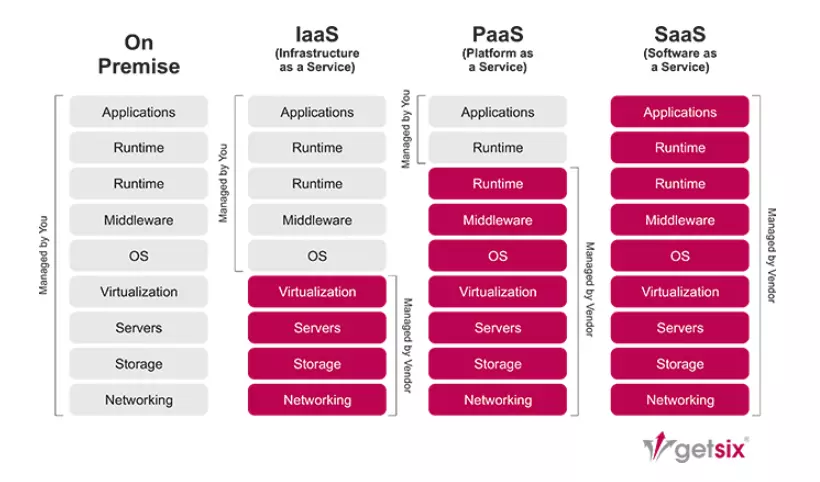
Credit: Getsix
Then there are four types of cloud computing, or cloud types, which we talk about in this post. They are:
- Public cloud
- Private clouds
- Hybrid cloud
- Multicloud
Think about how you need an internet browser to access the internet on your phone. Similarly, cloud computing tools let you access the cloud, connect your systems, and help you manage how you use the cloud.
Here are some of the top cloud computing tools, listed by category.
15 Best Cloud Computing Tools By Category
Many of these services are SaaS, meaning they provide the infrastructure, software, and other dependencies needed to do specific jobs in the cloud.
1. CloudZero – Cloud cost intelligence platform (SaaS)
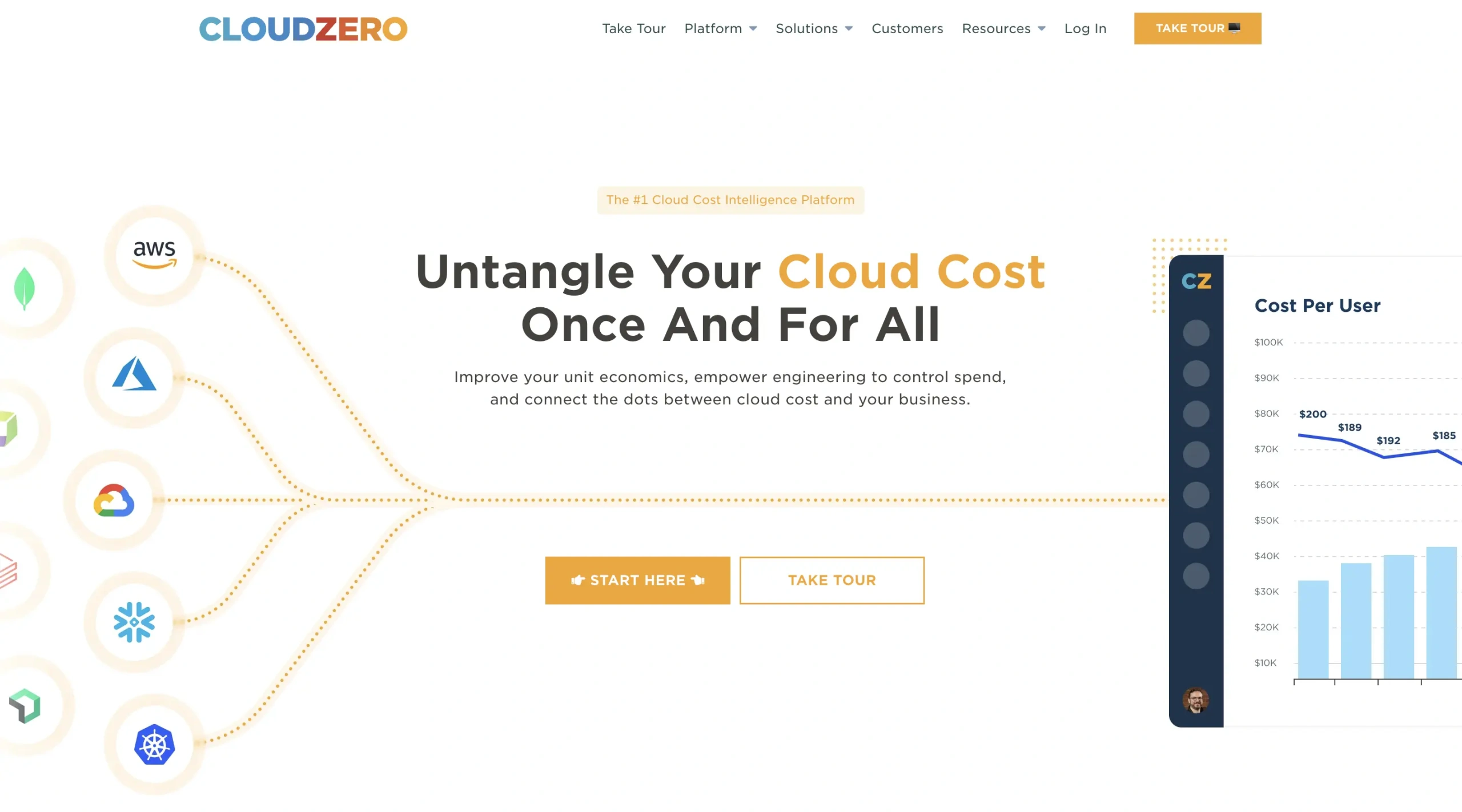
With CloudZero, SaaS companies can get better visibility into their cloud usage and costs, lower their AWS costs, and increase their ROI. CloudZero helps you align cloud costs to the people, processes, and features that generate them.
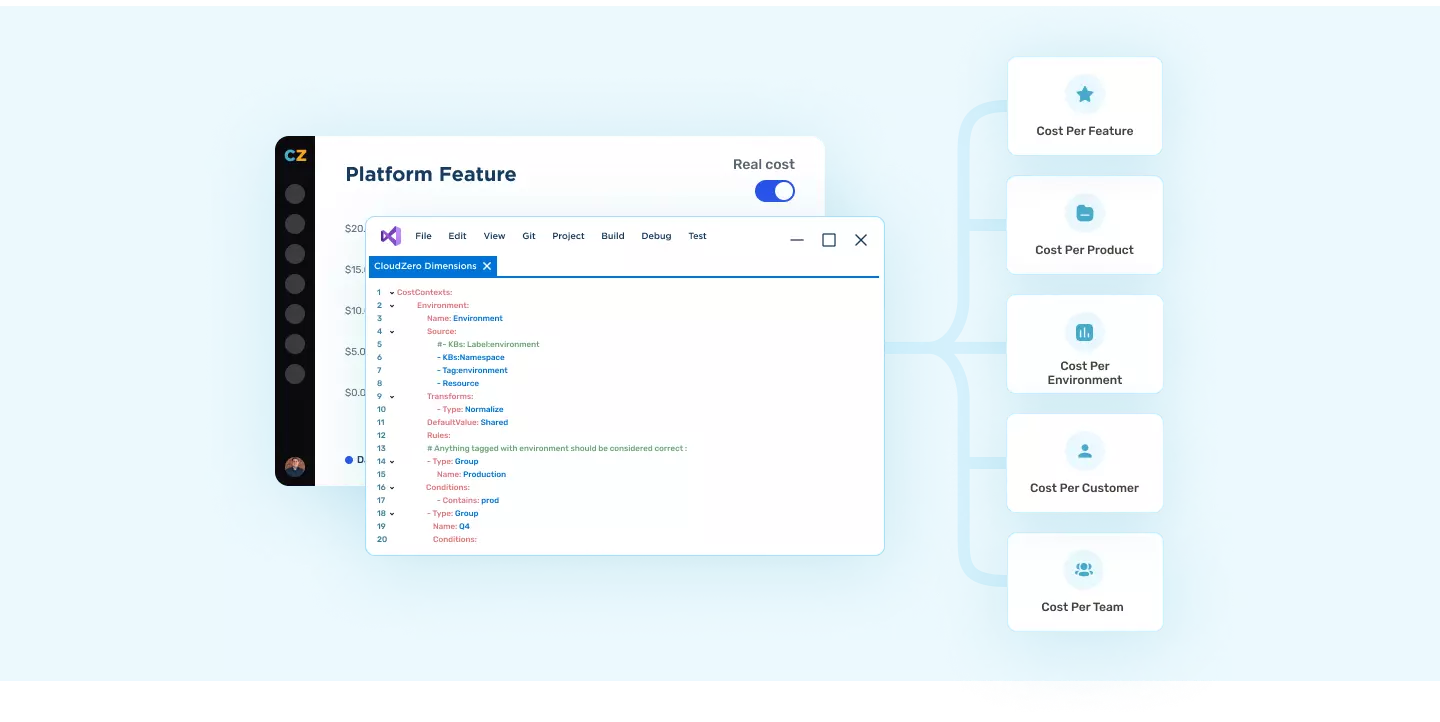
You can zoom in and view cost intelligence at a granular level, such as:
- Cost per customer – Find out how much each customer costs to support. With this intelligence, you can set your SaaS pricing to optimize profitability. In addition, you can use this insight to figure out what customer segments offer the highest ROI so that you can add similar clients to your portfolio.
- Cost per product feature – See what it costs to build, maintain, and run a feature, as well as its usage statistics. This information can help you decide which features to add to which pricing tier, which ones to repurpose or decommission, and how to price the feature for profit.
- Cost per development team – View and test your development team’s efficiency (s) against others in your organization or industry.
- Cost per project – Know how much each project costs so you can allocate enough resources and send accurate quotes for similar projects.
- Cost anomaly detection – Get notified when costs spike with Slack, email, or your favorite incident reporting tool, so you can take action to prevent overspending.
CloudZero also offers Budgets, a Migration Acceleration Program Dashboard for AWS MAP customers, and more, so it’s a complete cloud cost intelligence platform. See how CloudZero works in this demo.
If you’re looking to optimize your AWS Reserved Instances and Savings Plans, we’ve teamed up with ProsperOps to help you save up to 40%. If you want to automate replacing On-Demand Instances with Spot Instances to save more, check out Xosphere Instance Orchestrator.
2. Amazon Web Services – Infrastructure-as-a-Service (IaaS)
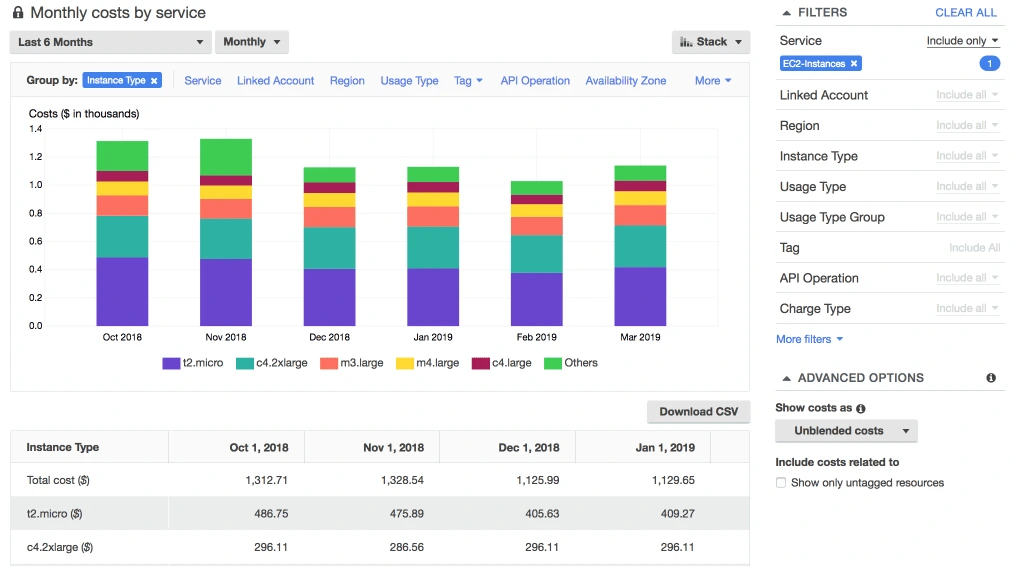
AWS provides over 200 cloud computing services. The services include compute, storage, analytics, IoT, AI/ML, and database services. With over 33% market share in cloud infrastructure services, AWS is the most popular IaaS today. It’s also popular because it offers nearly infinite resources and services across the entire cloud spectrum.
Other Infrastructure-as-a-Service examples are Digital Ocean, Microsoft Azure, Alibaba Cloud, Google Compute Engine, Vultr, IBM Cloud, Oracle Cloud Infrastructure, Linode, etc.
3. Google App Engine – Cloud application platform
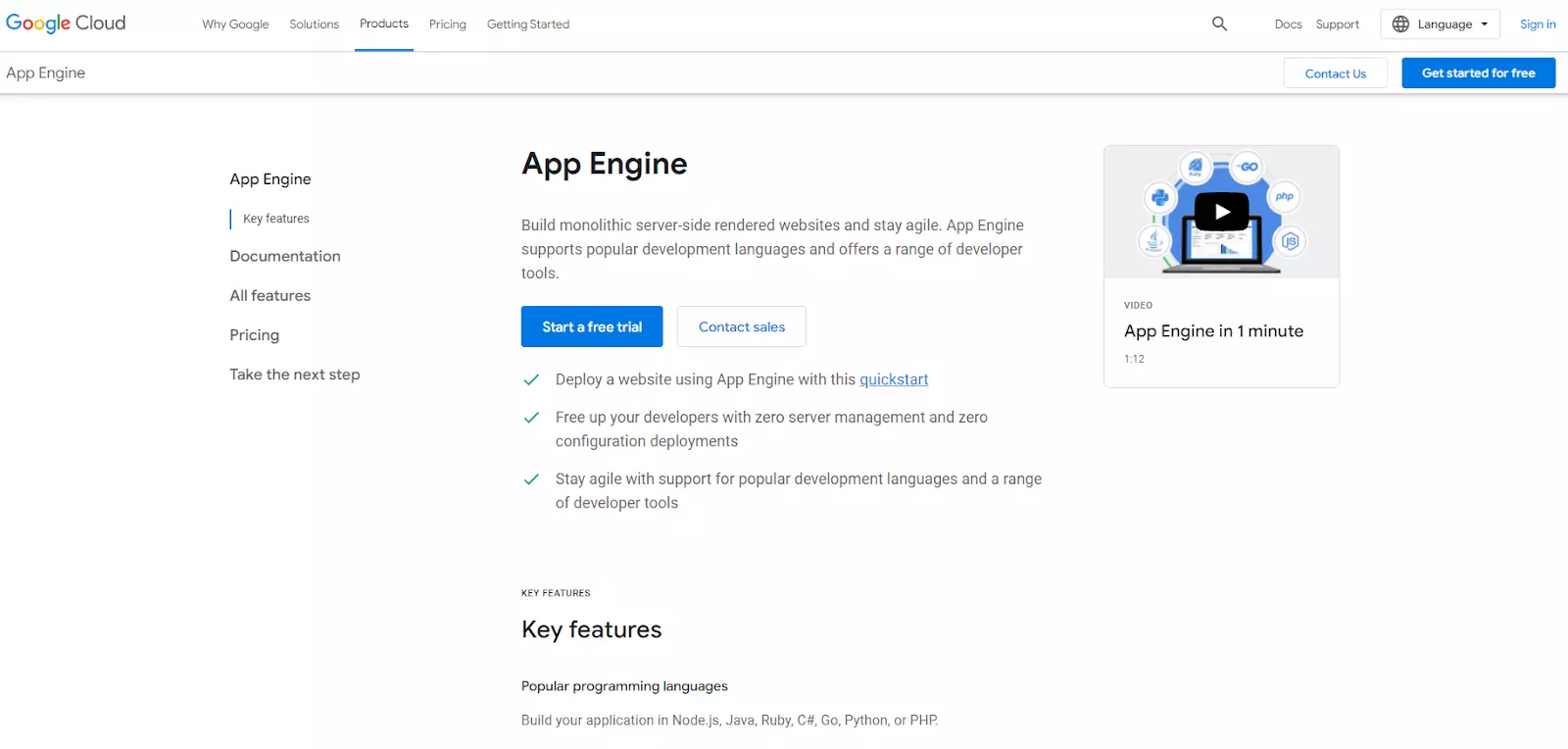
Google’s App Engine offers organizations and developers a platform for building, running, and hosting web applications. As a fully managed environment, App Engine means zero configuration and server management for your developers. With App Engine, you can also deploy in minutes and access an extremely scalable serverless PaaS environment.
More Platform-as-a-Service examples include Heroku, SAP Cloud, AWS Elastic Beanstalk, Dokku, etc.
4. Cloudsfer – Cloud migration tool
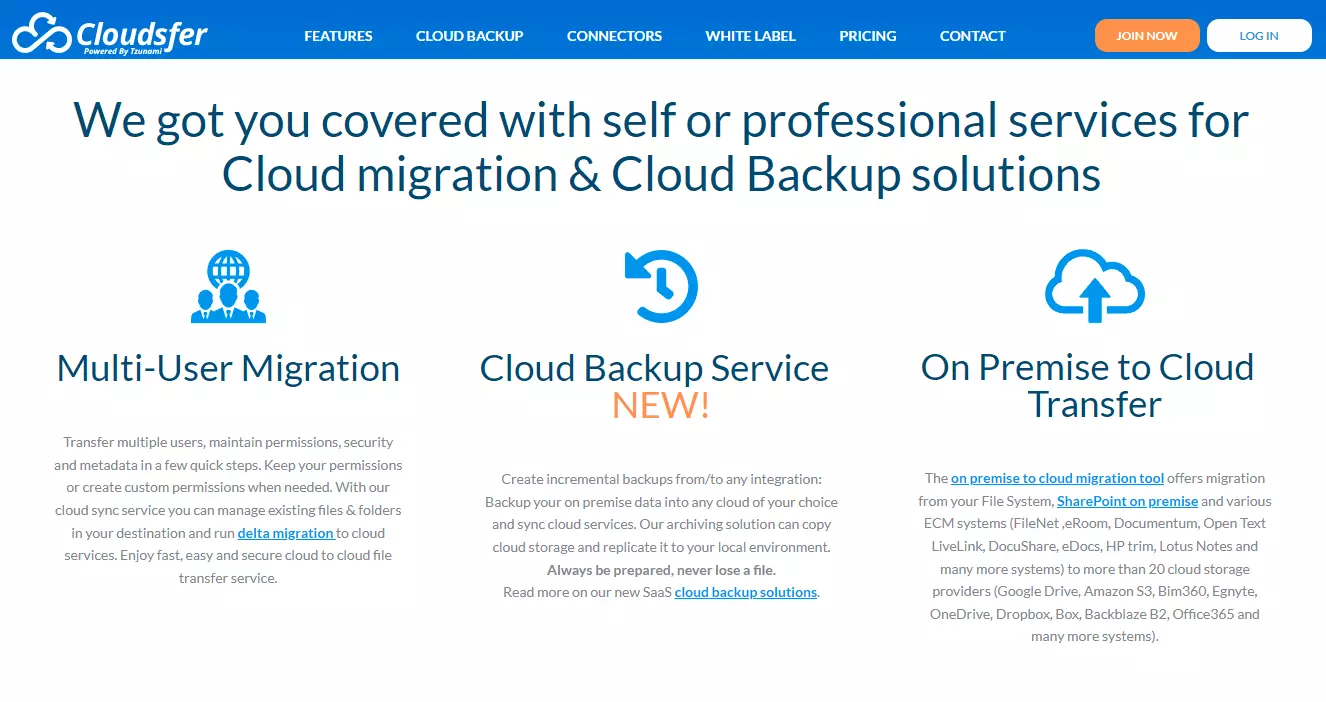
If you are planning a move to the cloud, check out our complete guide to cloud migration here. Cloudsfer offers on-premises-to-cloud and cloud-to-cloud migration services. You can migrate data from multiple sources to 20+ cloud storage services. The backup tool lets you sync cloud services, and the archiving tool lets you copy data from cloud storage and replicate it locally.
Whether you need a cloud-to-cloud, on-premise to cloud migration, or a tool that supports both, see more cloud migration services here. If you want to learn specific methods for migrating to the AWS public cloud specifically, here are seven AWS migration strategies to choose from.
5. Lacework – Cloud security tool
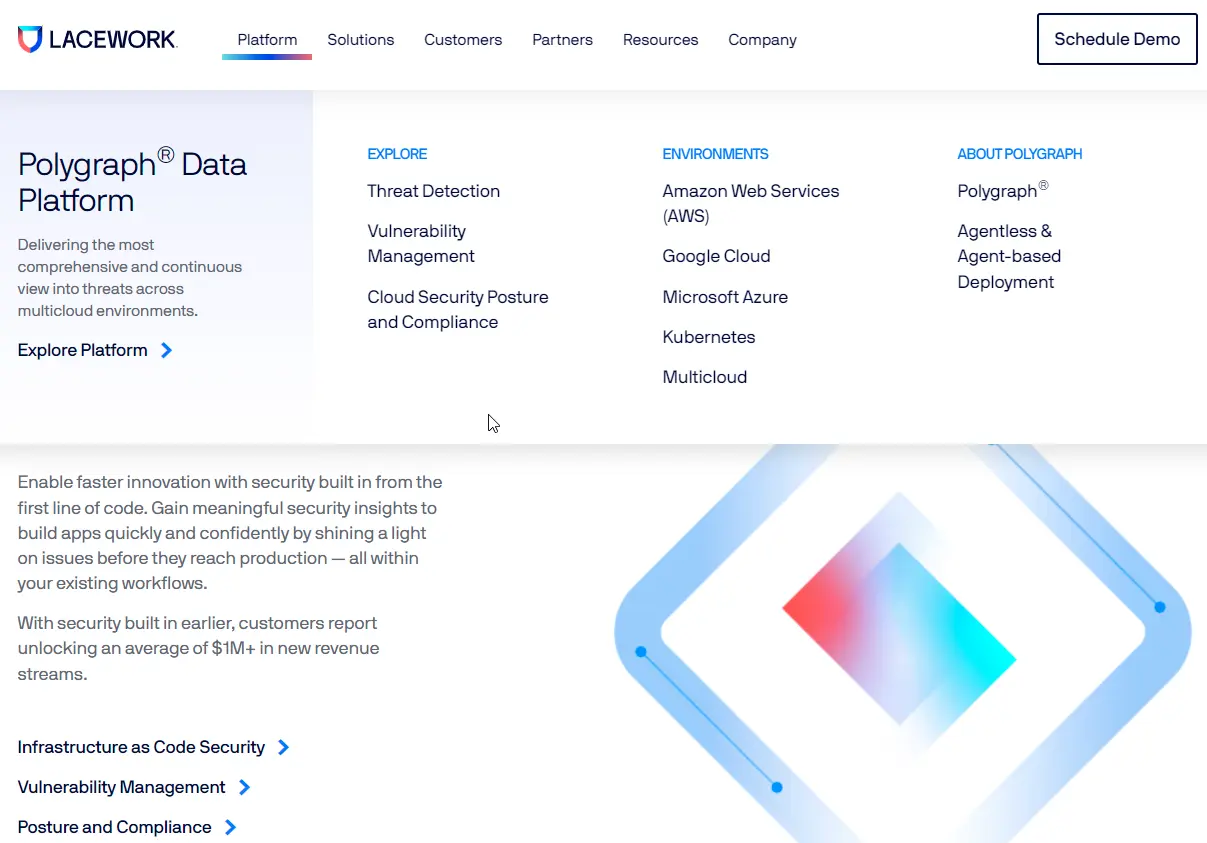
Lacework provides continuous cloud security and compliance management at scale. You can collect, analyze, and correlate security threats across multiple cloud platforms, such as AWS, Google Cloud Platform, and Azure, so you can prioritize addressing them.
This Infrastructure-as-a-Code security service provides vulnerability, security posture, and compliance management for all apps, workloads, containers, processes, machines, accounts, and users in your environment.
Lacework alternatives include Fugue, Orca Security, Synk, Threat Stack, etc.
6. Kubernetes – Container orchestration and management
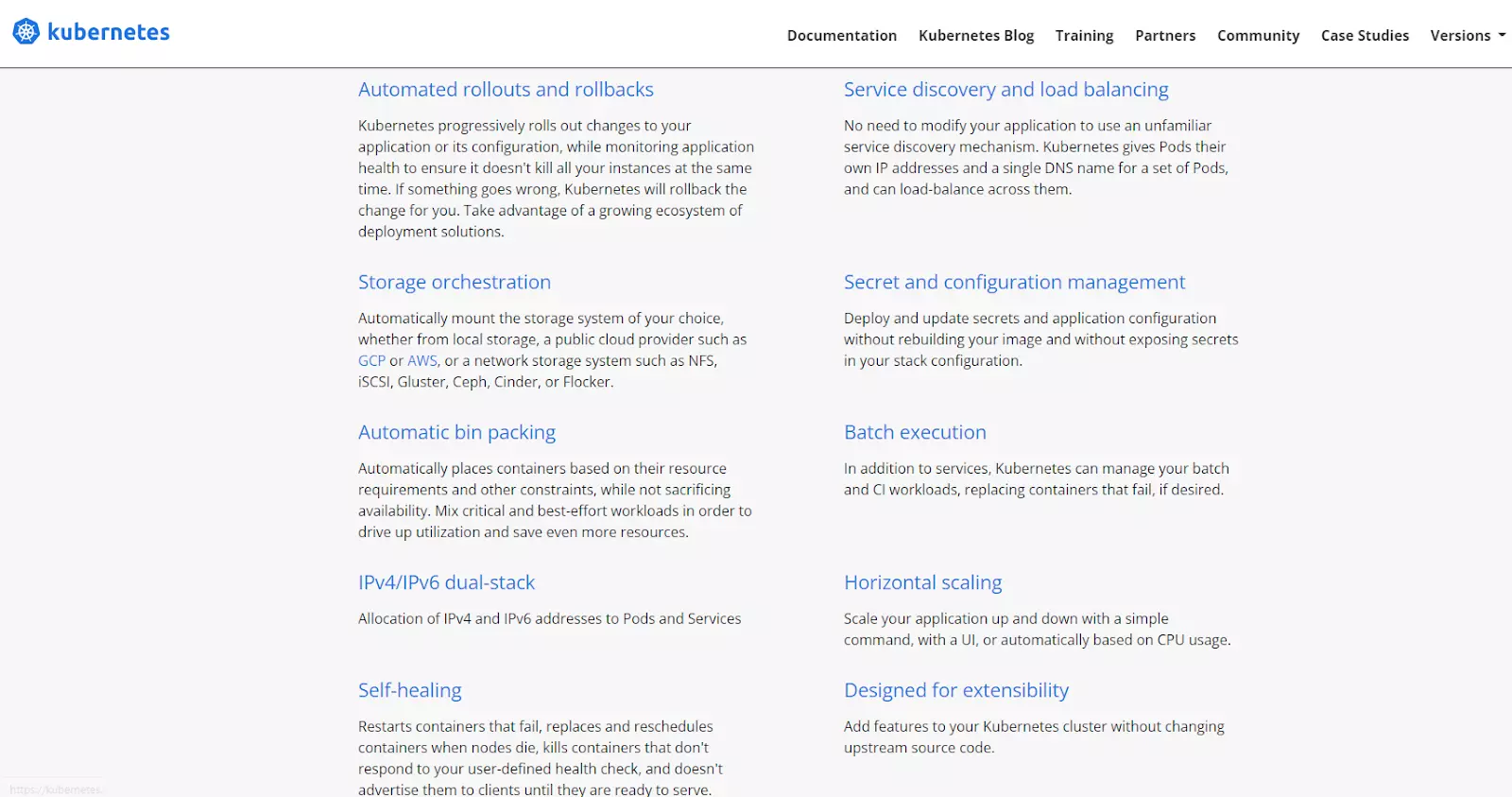
Kubernetes or K8s is an open-source, production-grade platform for orchestrating containers. You can use it as a platform and tool to deploy, scale, and manage containerized applications. Its self-healing, automated rollbacks and rollouts, load balancing, and batch execution capabilities make Kubernetes particularly well-suited to managing container orchestration at a massive scale.
Kubernetes alternatives include Docker, Amazon Elastic Kubernetes Service (EKS), Red Hat Openshift, Rancher, etc.
7. Ansible – Cloud infrastructure automation
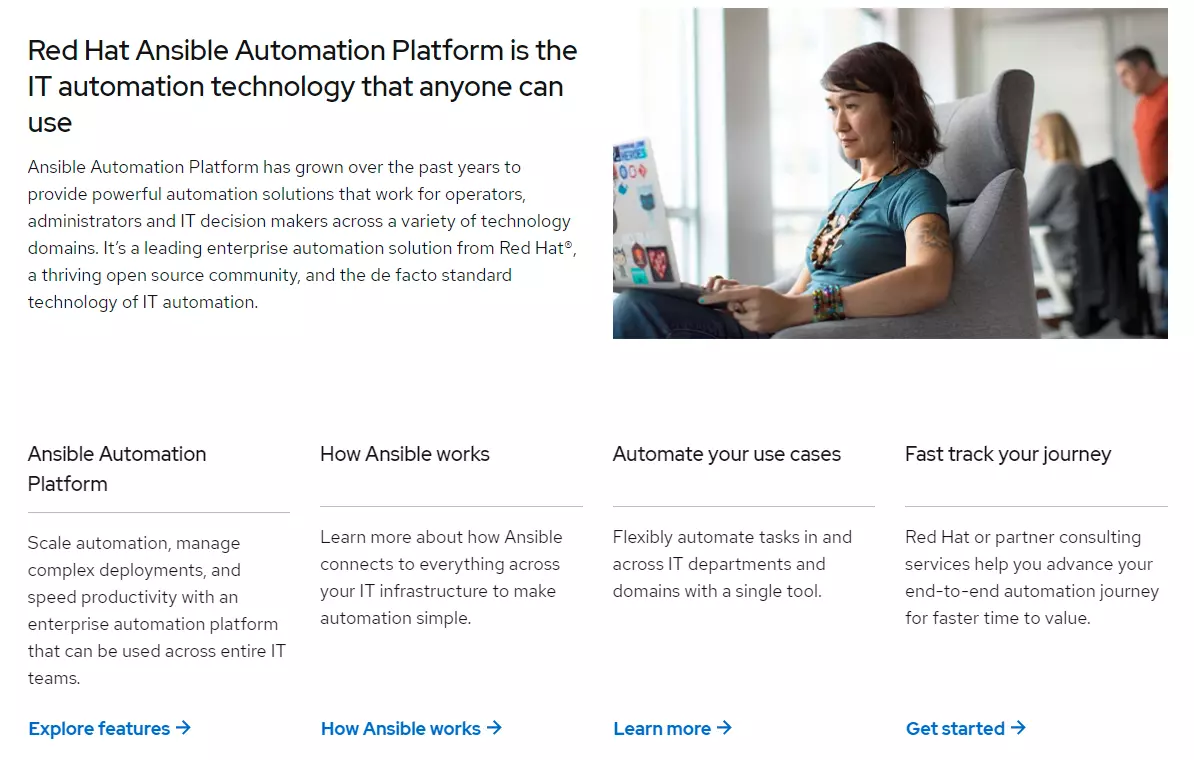
Red Hat’s Ansible suits organizations that are looking for a comprehensive platform that is also relatively easy to use. The platform lets you automate cloud provisioning, infrastructure configuration, container orchestration, application deployment, and security. Ansible is agentless, dependable, secure, and goal-oriented (no scripting required).
Ansible competitors include Terraform, AWS CloudFormation, Jenkins, CFEngine, Puppet, Microsoft Azure Automation, Chef, Google Cloud Deployment Manager, etc.
8. Sematext – Cloud monitoring service
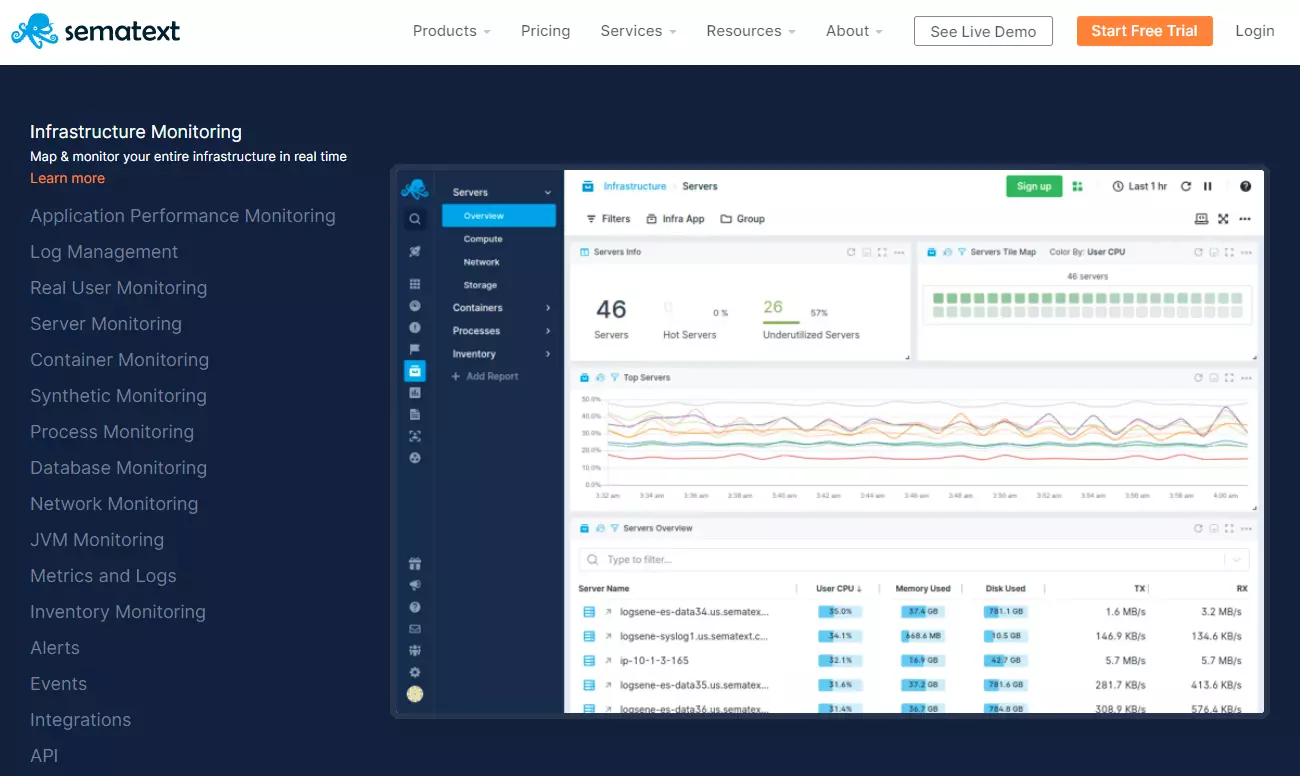
There are dozens of cloud monitoring tools out there, but Sematext provides an all-in-one monitoring platform.
You can monitor both front-end and back-end logs, APIs, applications, and multiple cloud environments from one place. Sematext lets DevOps teams monitor everything from networks to containers to microservices to databases and servers.
9. Informatica – Cloud data integration platform
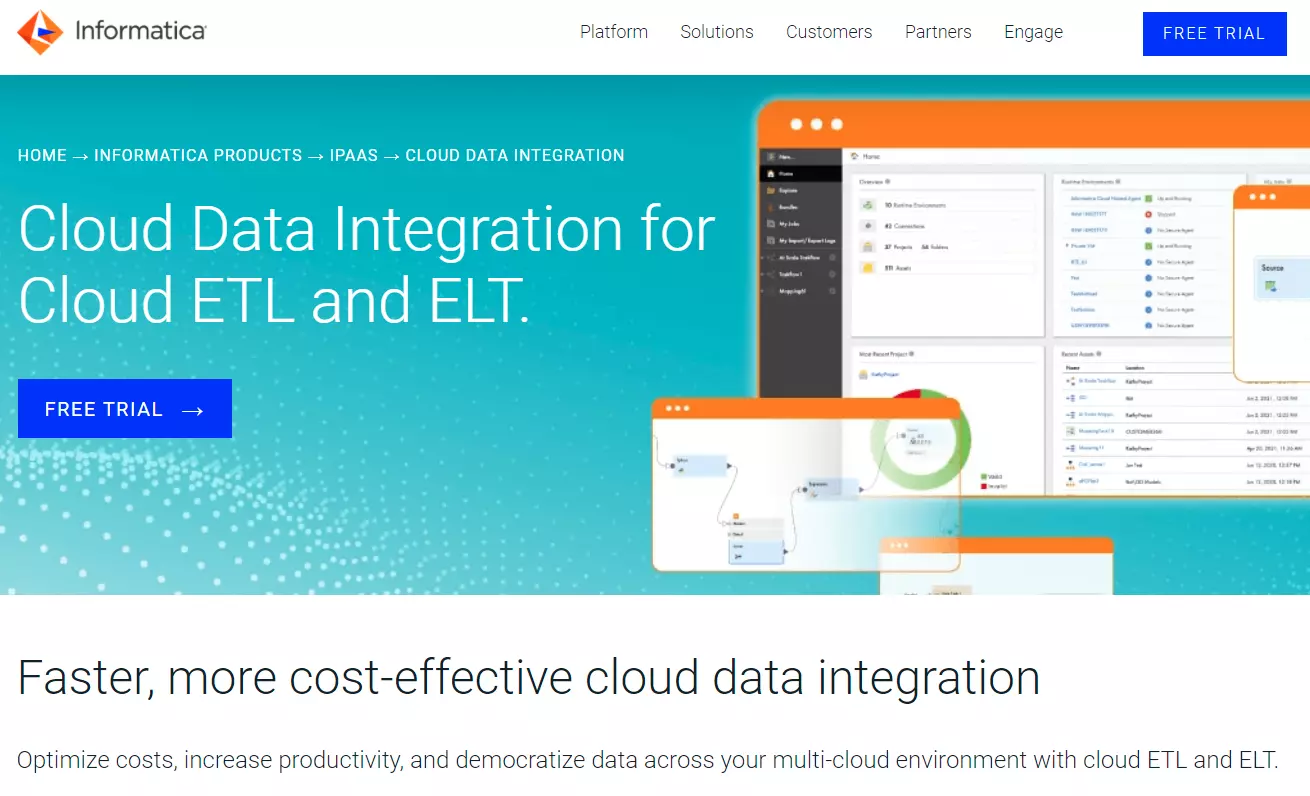
Informatica can combine data from multiple sources for analysis and business intelligence with ELT, ETL, Spark processing, or a fully managed serverless solution. It’s also available on-premises. The platform also features application integration, data cleansing/quality, API management, etc., in one platform and usage-based pricing.
More data integration tools include Talend Cloud Integration, Oracle Integration Cloud Service, SnapLogic, etc.
10. Carbonite – Data governance platform
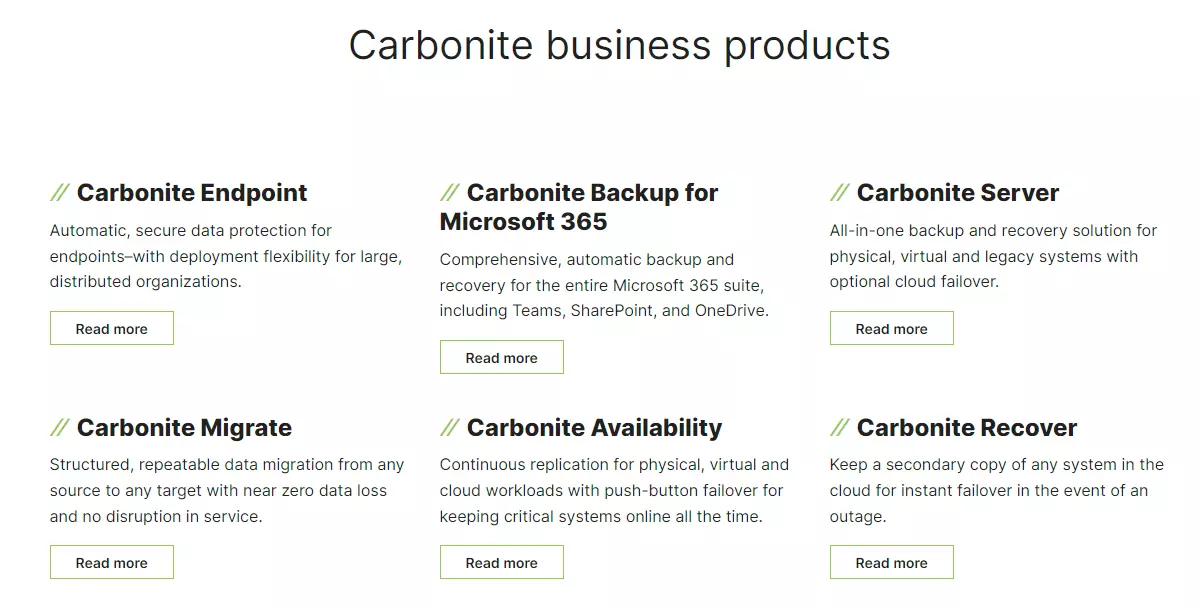
Carbonite offers data protection, migration, and backup services for homes, small businesses (professional), and enterprises (business solutions).
The service continuously replicates virtual, cloud, and physical workloads with push-button failover to ensure business-critical systems are always available. Carbonite’s automatic cloud backup service supports various environments, devices, and cloud platforms like MySQL, Hyper-V, and Oracle.
Other Data protection, backup, and recovery services are Zscaler, Google Cloud Storage, Forcepoint, Dropbox, OneDrive, etc.
11. Notion – Document collaboration and file-sharing
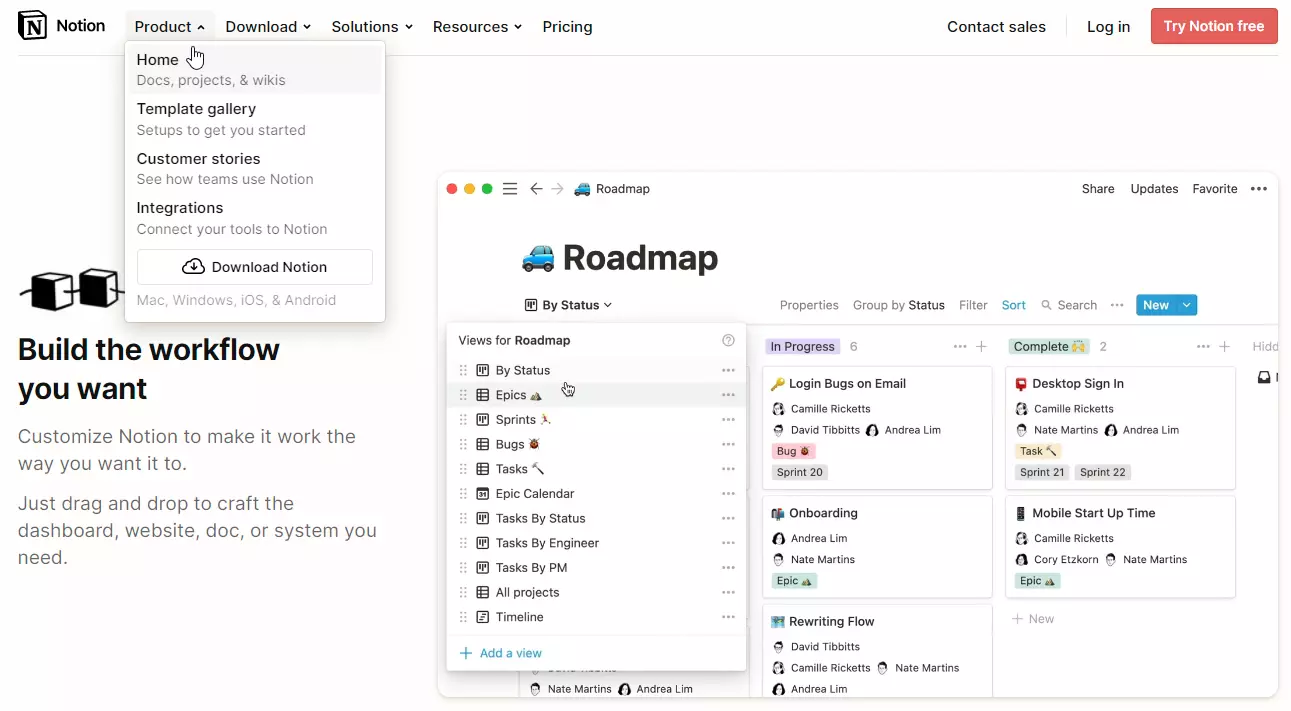
Notion provides a workspace, collaboration tool, knowledge base, and file-sharing platform in one. Teams can easily share knowledge, workflows, schedules, project progress, etc., and get work done without putting together multiple tools. Instead of starting from scratch, you can choose a template and modify it as you go.
Notion is also well-known for its note-taking capabilities, enabling you to record insights, ideas, and progress statuses from meetings, brainstorming sessions, etc., and share them with others or edit them on your own later.
Some Notion alternatives include Confluence, Bit.ai, Google Workspace, ProofHub, etc.
12. Civis Analytics – Big data and analytics tool
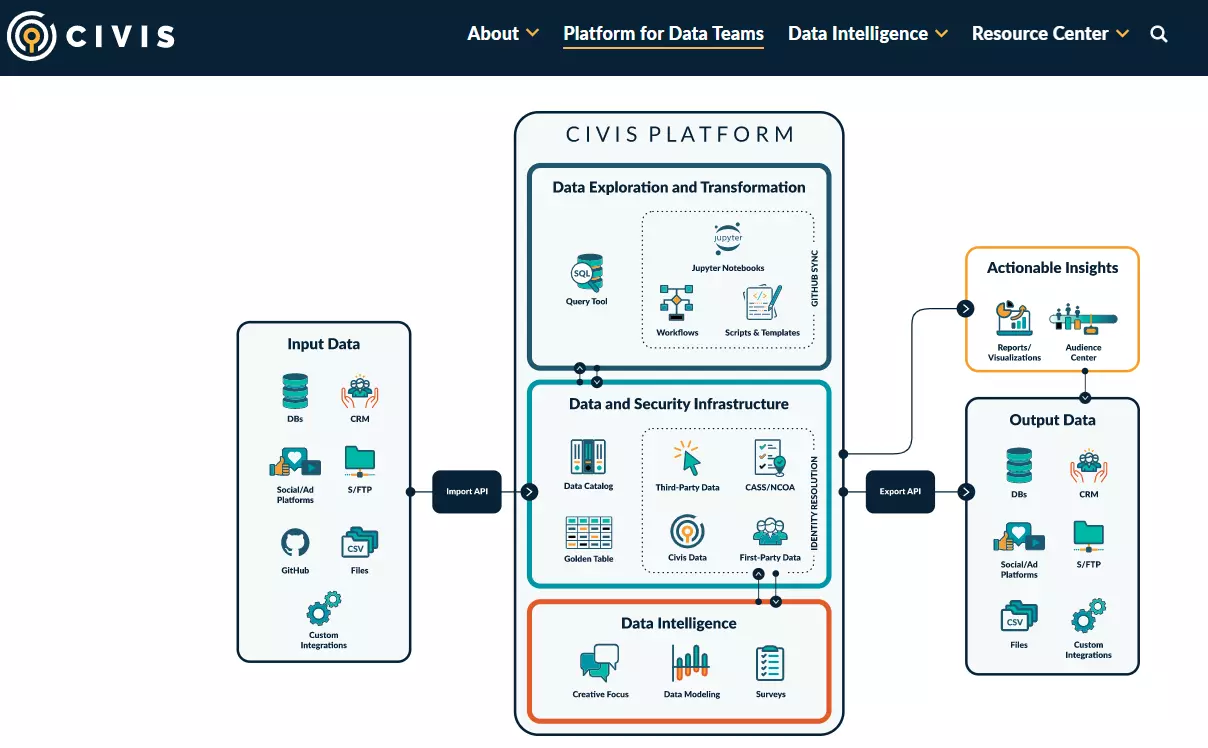
If you are looking for a service to help your data team centralize, clean, enrich, and apply data at scale, Civis Analytics may be a good choice. This service lets you collect data from trusted third-parties to fill knowledge gaps in your data, share it across your organization, and inform decision-making. You can also work with data in your favorite language, from SQL to Ruby to Python.
More Big Data analytics tools include Apache Hadoop, OpenRefine, RapidMiner, Amazon EMR, etc.
13. PagerDuty – Incident response tool
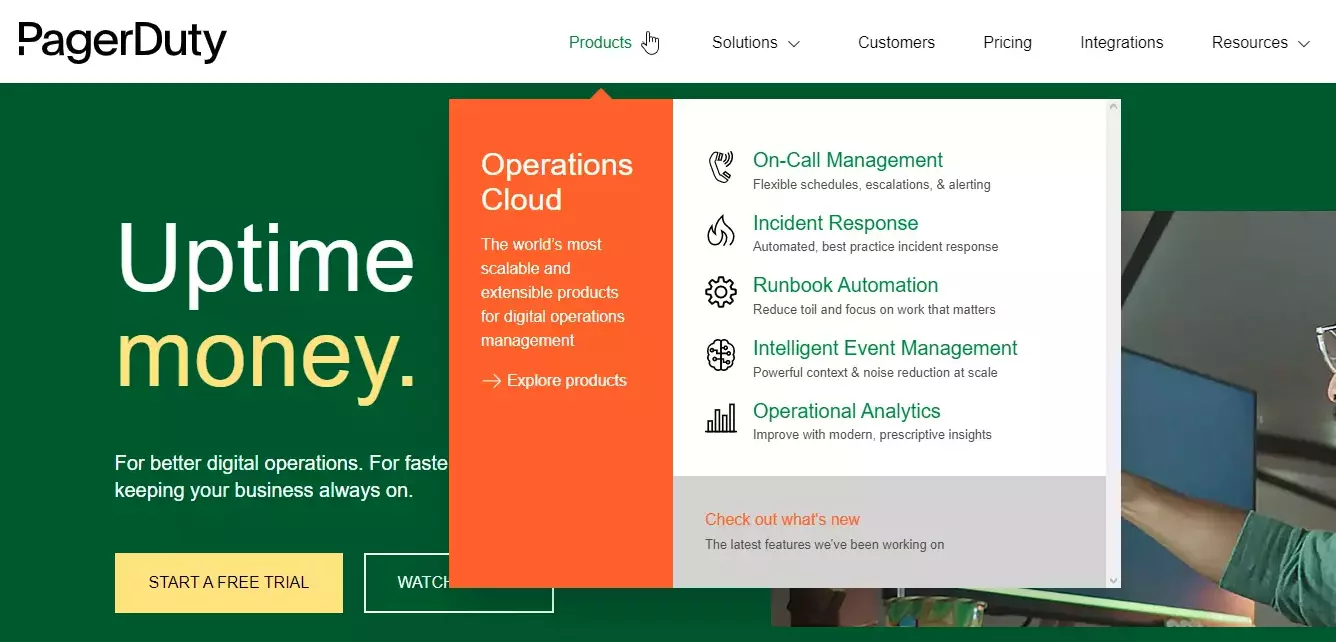
PagerDuty’s end-to-end incident response tools enable cross-functional teams to stay on top of incident management at scale. PagesDuty offers solutions for everyone, from DevOps and AIOps to security and customer service. The real-time on-call management and alerts make it easy for teams to schedule the right people for the right tasks at the right time.
Similar tools to PagerDuty include Big Panda, Splunk On-Call, Lightstep Incident Response by ServiceNow, etc.
14. Gremlin – Chaos engineering platform
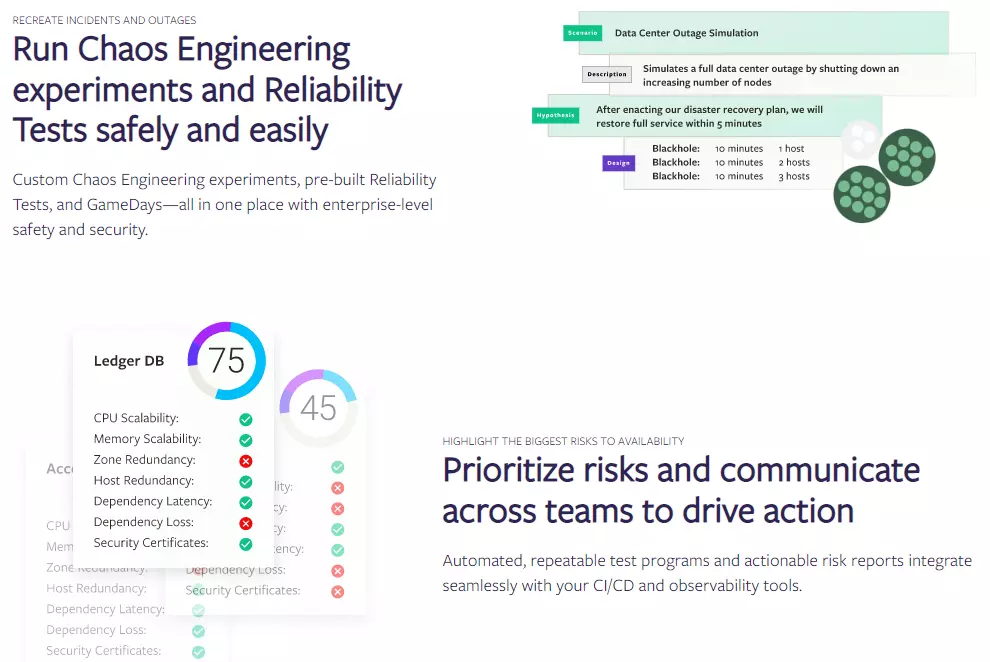
Chaos engineering is a proactive strategy to prevent system failures in cloud computing. Software developers use controlled experiments to identify weaknesses, study what could go wrong, and practice what to do if something does go wrong.
With Gremlin, you can use CPU spikes, server shut-downs, latency injections, process killers, and blocked DNS access to expose vulnerabilities in your system. Additionally, you can test your disaster recovery procedures to prevent a false sense of security.
Gremlin competitors include Chaos Toolkit, Litmus, ChaosMesh, etc.
15. GitHub – Source code management
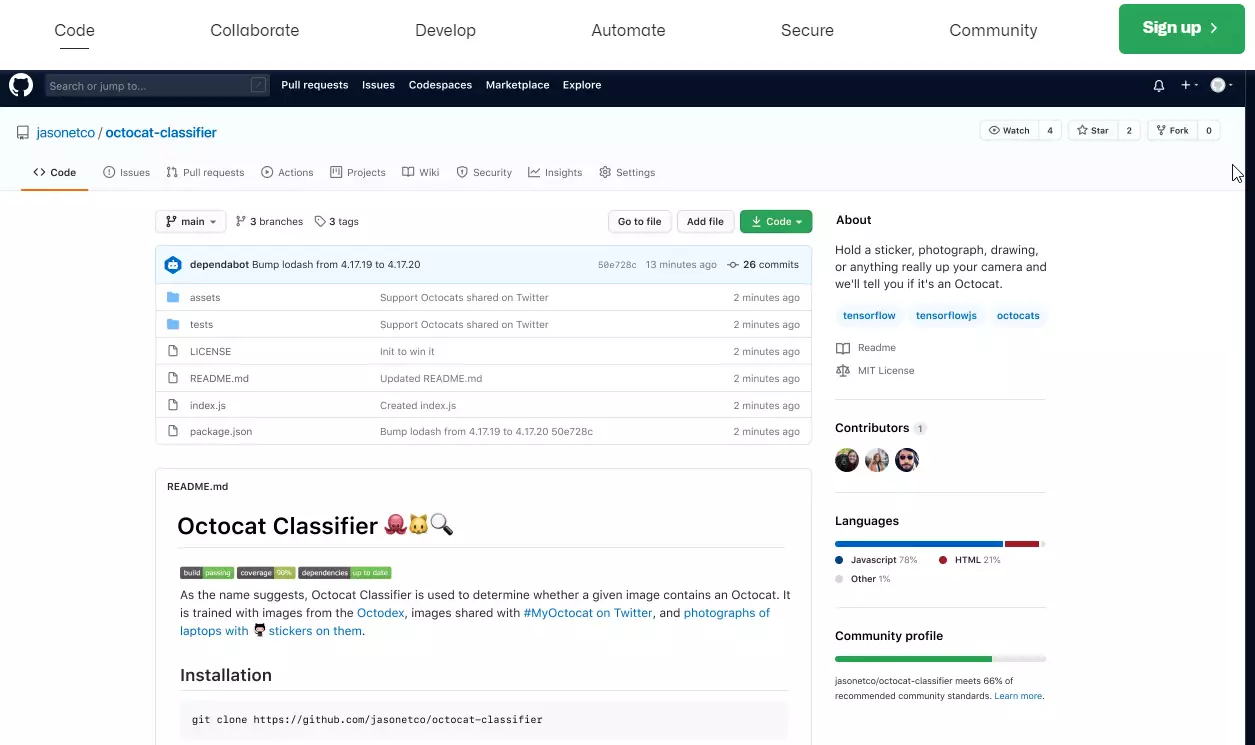
GitHub is the most popular cloud-based version control, collaboration, and source code repository hosting for Git developers. Git’s distributed version control model enables distributed teams to build, deploy, and improve software from anywhere. The platform is also popular among developers as a social network, a repository for open-source projects, and a coding project management tool.
GitHub alternatives include GitLab, BitBucket, AWS CodeCommit, etc.
Optimize Your Cloud Computing Usage And Costs With CloudZero
Cloud computing is one of the best developments in modern business. Cloud users can leverage IaaS, PaaS, and SaaS to get to market quickly, utilize managed cloud services, and enjoy pay-per-use pricing.
- You’ll pay for only the services you use, when you use them.
- You won’t need to purchase hardware for a physical data center.
- You can also ensure continuity by backing up and syncing business-critical workloads, apps, and data.
But while the cloud offers nearly limitless elasticity, it can quickly become a complex maze with little visibility into costs and usage. Unless you can clearly see which specific features, customers, environments, teams, projects, etc., are driving those costs, you won’t know how to optimize them without hurting customer experiences.
- Engineering, finance, and the C-suite can tell exactly what’s driving their cloud computing costs with CloudZero’s Cloud Cost Intelligence approach.
- We align cloud spend to the people, product features, and processes that create them.
- CloudZero also delivers cost intelligence for Snowflake and Kubernetes environments.
- Whether you have untagged, untaggable, or shared resources, CloudZero can map those costs accurately. It does not require tags to do this.
- Finally, if you are tired of juggling multiple tools to manage, analyze, and report your cloud computing costs and usage, CloudZero has the budgeting, migration, cost forecasting, and allocation solutions you need in one place.
Don’t just take our word for it.  to see how you can start reducing your cloud computing costs within a week or two, not months.
to see how you can start reducing your cloud computing costs within a week or two, not months.

